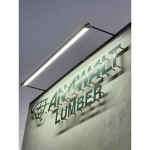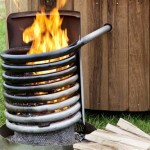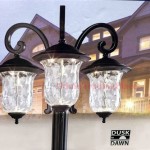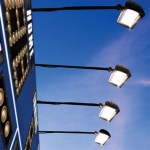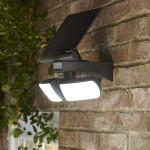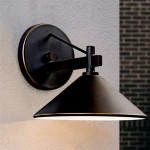LED Outdoor Decorative Lighting: Enhancing Aesthetics and Functionality
Outdoor decorative lighting plays a significant role in transforming exterior spaces into inviting and visually appealing environments. Light-emitting diode (LED) technology has revolutionized this field, offering energy-efficient, durable, and versatile solutions for illuminating landscapes, architectural features, and outdoor living areas. This article explores the various aspects of LED outdoor decorative lighting, highlighting its benefits, applications, and key considerations for effective implementation.
The demand for outdoor decorative lighting is driven by several factors. Homeowners and businesses alike seek to enhance the curb appeal of their properties, create ambiance for outdoor gatherings, and improve safety and security. LED lighting provides a cost-effective and environmentally friendly way to achieve these goals, offering a compelling alternative to traditional lighting options such as incandescent or halogen lamps.
Energy Efficiency and Cost Savings
One of the primary advantages of LED outdoor decorative lighting is its exceptional energy efficiency. LEDs consume significantly less power compared to traditional lighting technologies, translating to substantial cost savings over the lifespan of the fixtures. This reduced energy consumption also contributes to a smaller carbon footprint, making LED lighting a sustainable choice for environmentally conscious consumers.
The energy efficiency of LEDs is due to their light-generation mechanism. Unlike incandescent bulbs, which produce light by heating a filament, LEDs generate light through electroluminescence. This process is far more efficient, converting a greater percentage of electrical energy into visible light. Furthermore, LEDs produce very little heat, minimizing energy waste and reducing the risk of overheating or damage to surrounding materials.
The long lifespan of LED fixtures also contributes to cost savings. LEDs typically last for tens of thousands of hours, significantly longer than incandescent or halogen bulbs. This reduces the frequency of replacements, minimizing maintenance costs and labor expenses. In commercial applications, where numerous outdoor lights are used, the cumulative savings from reduced energy consumption and replacement costs can be considerable.
To illustrate the cost savings, consider a scenario where a homeowner replaces ten 60-watt incandescent bulbs with ten equivalent LED bulbs that consume only 8 watts each. Assuming the lights are used for an average of four hours per day, the energy savings over a year would be substantial. The LED bulbs would consume significantly less electricity, resulting in a lower electricity bill and a reduced environmental impact. The longer lifespan of the LED bulbs would also eliminate the need for frequent replacements, further reducing costs.
Durability and Weather Resistance
Outdoor lighting fixtures are exposed to a variety of environmental conditions, including rain, snow, extreme temperatures, and ultraviolet (UV) radiation. LED outdoor decorative lighting fixtures are designed to withstand these harsh conditions, offering excellent durability and weather resistance. This makes them a reliable and long-lasting solution for illuminating outdoor spaces.
LED fixtures are typically constructed from robust materials such as aluminum, stainless steel, or durable plastics, which are resistant to corrosion and degradation. These materials protect the internal components of the fixture from moisture, dust, and other environmental contaminants. The housings are often sealed to prevent water ingress, ensuring reliable operation even in wet or humid conditions.
The solid-state nature of LEDs also contributes to their durability. Unlike incandescent bulbs, which have a fragile filament that can easily break, LEDs are resistant to shock and vibration. This makes them suitable for use in areas where they may be subjected to impact or movement. Furthermore, LEDs are less susceptible to damage from temperature fluctuations, allowing them to operate reliably in a wide range of climates.
The weather resistance of LED outdoor decorative lighting is often indicated by an ingress protection (IP) rating. This rating specifies the level of protection against solid objects and liquids. For outdoor applications, it is generally recommended to choose fixtures with an IP rating of IP65 or higher, which indicates that they are protected against dust and water sprayed from any direction. Careful consideration of the IP rating is crucial to ensure the longevity and reliable performance of outdoor lighting fixtures.
Versatility and Design Options
LED technology offers a high degree of versatility in terms of design and application, allowing for a wide range of creative lighting effects. LED outdoor decorative lighting fixtures are available in various shapes, sizes, colors, and styles, making it possible to customize the lighting scheme to complement the architectural features and landscape design of any property.
LEDs can be easily integrated into different types of fixtures, including spotlights, floodlights, path lights, string lights, and deck lights. This allows for targeted illumination of specific areas or features, creating visual interest and enhancing the overall ambiance of the outdoor space. For example, spotlights can be used to highlight architectural details, while path lights can illuminate walkways and driveways for safety and security.
The color temperature of LED lighting can also be adjusted to create different moods and effects. Warm white light (around 2700-3000 Kelvin) provides a cozy and inviting atmosphere, while cool white light (around 4000-5000 Kelvin) offers a brighter and more energizing effect. Color-changing LEDs can be used to create dynamic lighting displays, allowing for customization of the color scheme to suit different occasions or preferences.
Smart LED lighting systems offer even greater control and flexibility. These systems allow users to adjust the brightness, color, and on/off schedule of their outdoor lights remotely using a smartphone or tablet. Smart lighting systems can also be integrated with other smart home devices, such as motion sensors and security cameras, to create a comprehensive and automated outdoor lighting solution.
Specific Applications of LED Outdoor Decorative Lighting
LED outdoor decorative lighting finds applications across a wide spectrum of settings, from residential gardens to commercial establishments and public spaces. The versatility and energy efficiency of LEDs make them suitable for various lighting purposes.
Residential Lighting: Homeowners utilize LED lighting to illuminate gardens, patios, decks, pathways, and driveways. Strategically placed spotlights can highlight trees, shrubs, and architectural elements, enhancing the property's curb appeal. Path lights provide safe and well-lit walkways, while deck lights create a cozy atmosphere for outdoor entertaining. String lights, often featuring LED bulbs, add a festive touch to patios and pergolas.
Commercial Lighting: Businesses use LED outdoor lighting to attract customers, enhance security, and create a welcoming environment. Restaurants and cafes often use decorative lighting to create an inviting outdoor dining area. Retail stores use spotlights to showcase their storefront and signage. Hotels and resorts utilize landscape lighting to create a relaxing and aesthetically pleasing atmosphere for guests.
Public Space Lighting: LED lighting enhances parks, plazas, and public gardens by providing safe and attractive illumination. Path lights and bollard lights guide pedestrians along walkways, while spotlights and floodlights accentuate sculptures, fountains, and other architectural features. The energy efficiency of LEDs makes them an ideal choice for large-scale public lighting projects.
Security Lighting: Motion-sensor LED floodlights provide security and deter potential intruders. These lights automatically illuminate when motion is detected, providing a visual deterrent and alerting residents or security personnel to possible threats. The long lifespan and energy efficiency of LEDs make them a cost-effective solution for security lighting applications.
Key Considerations for Implementation
Effective implementation of LED outdoor decorative lighting requires careful planning and consideration of several factors. These factors include the desired lighting effect, the type of fixtures to be used, the placement of the lights, and the overall energy efficiency of the system.
Planning the Design: Before installing any outdoor lighting, it is essential to develop a comprehensive lighting plan. This plan should consider the specific areas to be illuminated, the desired lighting effect, and the architectural style of the property. It is also important to consider the impact of the lighting on neighboring properties and to minimize light pollution.
Selecting the Right Fixtures: Choosing the right type of LED fixtures is crucial for achieving the desired lighting effect. Spotlights, floodlights, path lights, and string lights all serve different purposes and create different visual effects. It is important to select fixtures that are appropriate for the specific application and that are compatible with the overall lighting design.
Placement of Lights: The placement of lights is critical for achieving the desired lighting effect and for maximizing energy efficiency. Lights should be positioned to highlight architectural features, illuminate pathways, and create a visually appealing ambiance. It is also important to avoid placing lights in areas where they may cause glare or interfere with the vision of drivers or pedestrians.
Energy Efficiency: While LEDs are inherently energy-efficient, it is still important to consider the overall energy efficiency of the lighting system. Choosing fixtures with high lumen output and low power consumption will minimize energy waste and reduce electricity bills. Using timers or motion sensors to control the lights can also help to conserve energy.
Professional Installation: While some outdoor lighting projects can be completed by homeowners, it is often recommended to hire a professional electrician or landscape lighting designer. Professionals have the expertise and experience to design and install lighting systems that are safe, efficient, and visually appealing. They can also help to ensure that the lighting system complies with all applicable building codes and regulations.
In conclusion, LED outdoor decorative lighting offers a compelling combination of energy efficiency, durability, versatility, and aesthetic appeal. By carefully considering the various factors discussed in this article, homeowners and businesses can effectively utilize LED lighting to enhance the beauty, safety, and functionality of their outdoor spaces.

Outdoor Led Lighting Ideas For Any Style Backyard

Homehop Solar Led Lights For Garden Home Outdoor Decoration Lamp Waterproof Deck Step Fence

Homehop Solar Led Lights For Garden Outdoor Home Wall Step Decorative Waterproof Lamps

Homechum 2 Pcs Solar Firework Light Outdoor Garden Decorative Lights 90 Led Powered Diy Landscape For Pathway Backyard Parties Decor Decorations Cool White Com

Lightshare 6 Ft 28 8 Light Warm White Lighted Willow Tree Led Decor For Indoor Outdoor Decoration Gqls6ft Ww The Home Depot

8 Modes Solar Fireworks Lights 60 90 150 200 Led Outdoor Diy Garden Decorative Waterproof Fairy Lawn Decor Temu

Dongpai Led Net Mesh Fairy String Decorative Lights 200 Outdoor Waterproof With 8 Lighting Modes For Chirstmas Wedding Party Holiday Decor 4 9ft X Warm White Com

Buy Agnija 42 Led Fairy String Lights Decorative Indoor Outdoor Lighting With Warm White Twinkle For Parties Wedding Patio Bedroom The Light To Give A Unique Look

Buy X4decor 42 Led Fairy String 12 M White Twinkle Light With 5 Wall Hooks For Festival Special Navratri Karvachouth Diwali New Year Party Indoor Outdoor Decoration Combo Pack Of 1

Singingarden Solar Led Moon Star Sun String Lights Outdoor Decorative For Garden Patio Yard Wedding Party Broe Com
Related Posts
